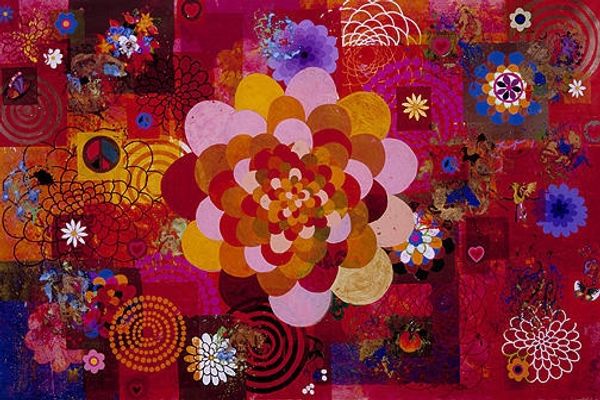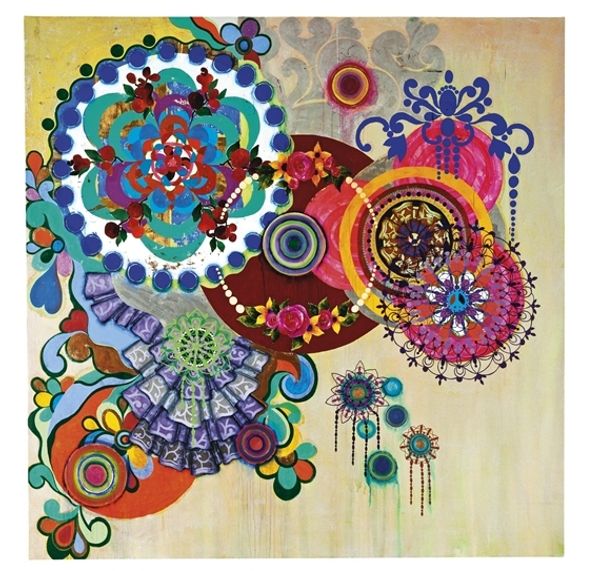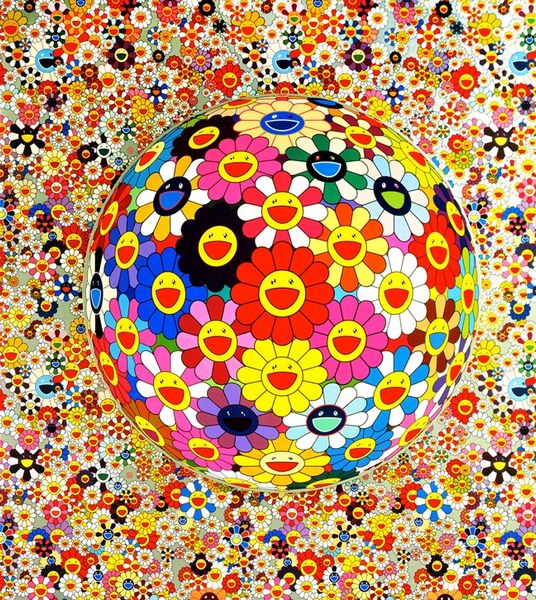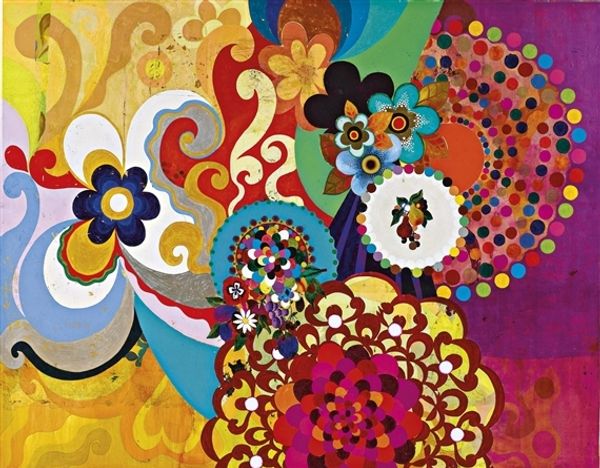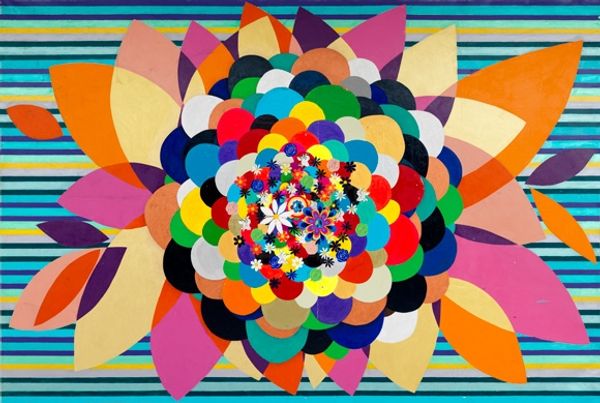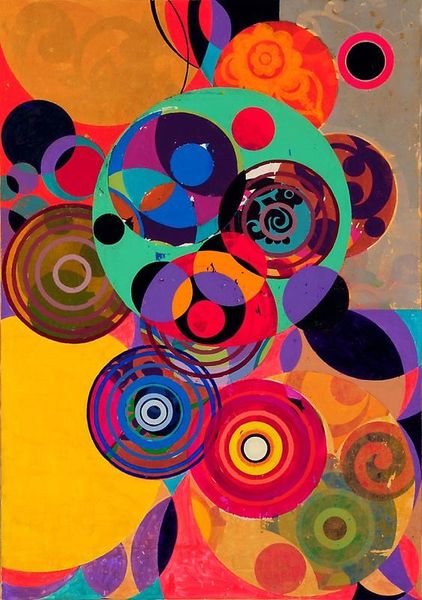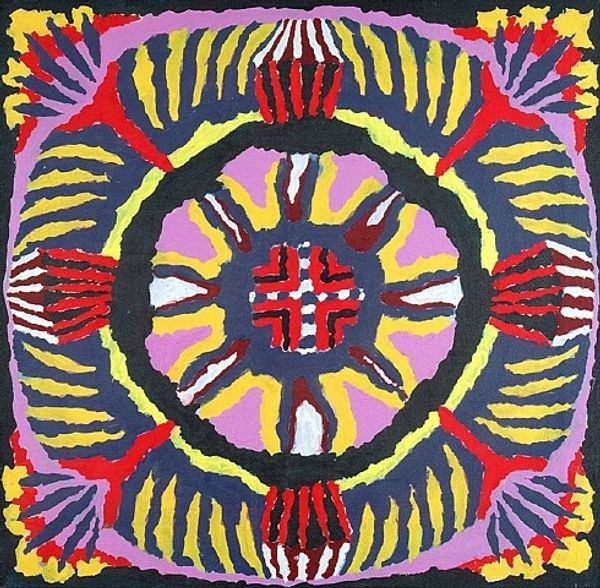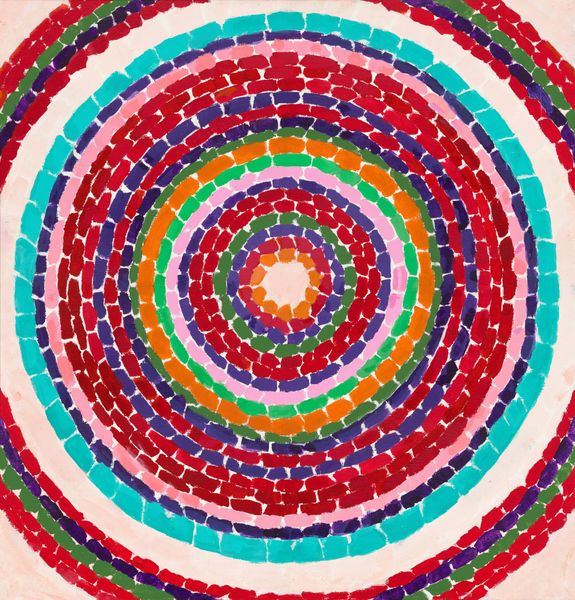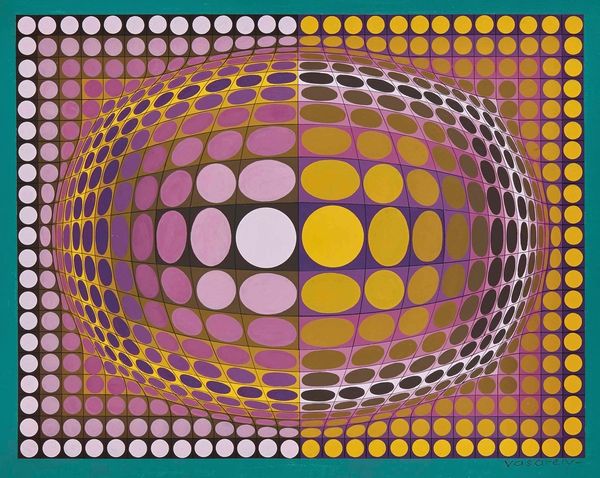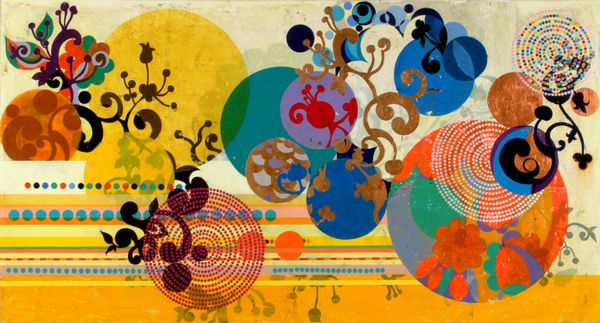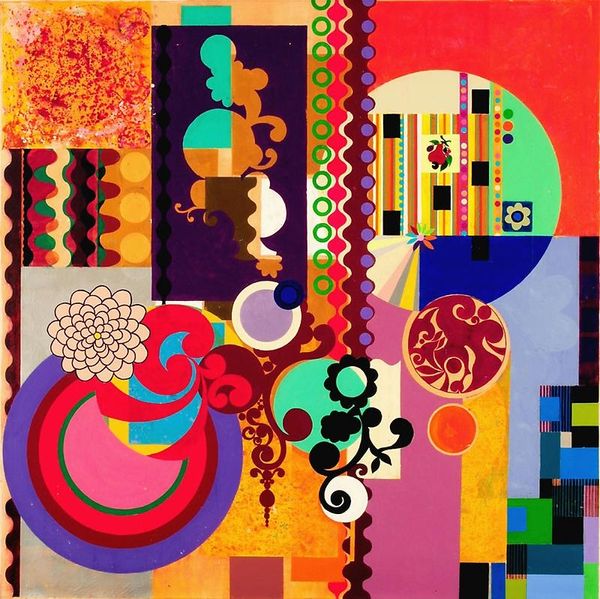
Copyright: Beatriz Milhazes,Fair Use
Curator: Allow me to introduce you to Beatriz Milhazes’ “Nega Maluca” created in 2006, she worked with acrylic on canvas to conjure this visual marvel. Editor: Wow, it’s like a kaleidoscope threw up joy. So vibrant! The colours make me want to dance...or at least tap my foot. Curator: Observe the painting’s meticulously constructed concentric circles; how the layered composition creates an intriguing dialogue between flatness and depth. Note, too, the intricate use of pattern repetition, creating what some have described as an "organic pattern" within the constraints of geometric forms. Editor: Totally see the layers! It reminds me a bit of those old record players with spinning discs and dizzying shapes. And, for sure, despite all those perfect shapes, there’s this wild, flower-burst vibe too. Very clever. Curator: It's tempting to analyze the piece within a purely formalist framework—exploring semiotic signifiers and deconstructing the visual syntax. Yet, there is also something deeply pleasurable in yielding to the optical play the piece orchestrates. The artist even layers transparent acrylic paint to create luminosity! Editor: Absolutely! Forget the fancy frameworks for a sec—just LOOK at it! The patterns keep your eye moving, a delightful riot of color and shapes that are a total mind trip. Curator: Precisely. It’s in that tension—between disciplined structure and exuberant chaos—that Milhazes seems to pose essential questions regarding postmodern visual experience. The geometry suggests precision, but the composition itself feels wonderfully organic, a floral mandala bursting forth. Editor: Exactly my thoughts! Like she's somehow bottled a carnival. This piece, this "crazy black woman" feels unapologetically, well, alive. She calls the artwork a "Nega Maluca," a traditional coconut and chocolate desert in Brazil—sweet madness, in a way. Curator: The piece really encourages reflection on pattern, its ability to structure our visual field, but also the inherent possibilities for play and subversion contained within it. Editor: Makes you see how something structured can still feel spontaneous. Gives one hope, you know?
Comments
No comments
Be the first to comment and join the conversation on the ultimate creative platform.
